In the beginning, Gaeta was nothing more than a steep hill, overlooking the Tyrrhenian sea. It had several names in different times and is now called Monte Orlando after the French semi-legendary hero. It is by no means the only hill or mountain in Italy bearing this name, a tribute to the time when over these places a watch was maintained to spot Turkish galleys. However, it is unlikely that Roland ever set foot on this particular hill.
The hill presents caves and fractures, the largest of which is called the Montagna Spaccata (“broken mountain”). As far as we know, the place has been inhabited since the tenth or eleventh century BC by the local population of the Aurunci. Still, the written history begins only in the fourth century BC when the Romans conquered the area. Gaeta lies fewer than 150 kilometres southeast of Rome in one of the directions of early expansion.
Wet nurse
Monte Orlando offers a natural harbour, closed to the south by a strip of land called Punta Stendardo (“Point Banner”). The gentle slope of the point allowed for much easier building than the hill and was thus the chosen location for the village. The name of this village, Gaeta, is attributed by Virgilius to the fact that Aeneas, coming to Italy from Troy with his family and followers, would have buried here his old wet nurse Caieta.
Little remains today of the roman village and harbour because they have mainly been built over since medieval times. The most ancient buildings, or their remnants, date back to the tenth century; an example is a gate on the short street leading from the harbour to the village, called the Posterola, and nowadays embedded in much more recent buildings. During the Middle Ages and the Renaissance, the harbour had great strategical relevance and hosted the military fleet of the Popes.
The Roman galleys that participated in the battle of Lepanto in 1571 set sail from here to join the Venetian and Genoan forces. Moreover, Gaeta is one among the cities that claim to have been the birthplace of the great sailor Giovanni Caboto (John Cabot; other cities raising the same claim are Venice and Genova with their respective hinterlands).
Lucky catch
The harbour is today home to a small fishing fleet and has an area reserved for the Italian Navy. Walking along the street bordering the port, you may spot fishermen tending their nets or selling their catch. At sunset, you can sit there and await the return of the fishing boats. And, if you and the fishermen are lucky and the catch has been good, the boats are surrounded by clouds of seagulls that prey on the debris thrown off in the process of cleaning the nets. But even when the weather is bad, and the fishermen stay at home, the harbour and Punta Stendardo may offer you some dramatic views.
The village has few streets but many stairways because Punta Stendardo, though less steep than Monte Orlando, is by no means flat. The streets and stairs lead to the two castles on the top built by the Anjou and the Aragona kings. If you climb further, you leave the village by the road (which then becomes a path), climbing the hill on its least steep side.
Treasure tomb
The summit of Monte Orlando holds a treasure: the tomb of a wealthy Roman patrician, and former consul, Lucius Munatius Plancus who died in year 1 AD. The tomb is a very typical and well-preserved example of its kind: a large and flat tower covered with marble plates. Most of the Roman tombs were located in the more approachable places and were stripped of their marble cover for re-use in palaces and villas.
They appear today as made of stone or brick, and it is hard to imagine their former splendour. It seems that the location of this particular tomb made the removal of marble too expensive, mainly because a quarry is only a few kilometres away, close to the village of Coreno Ausonio. Near the tomb is a lighthouse, still in operation.
Timeline
The pictures in this article were taken in different days, seasons and years, using an Olympus EPM-1 or a Pentax KS-1, except for the image of the Montagna Spaccata that I took from my kayak using a (low quality) waterproof camera.
All modern cameras and lenses are excellent, and the main problem I have is to carry one that is small and light enough to fit in a bag that already contains several other, photography unrelated, items. Light and luck are the real limits, and I had the fortune of going to Gaeta regularly once a week over many years because I give a course of Biochemistry at the School of Nursing in Gaeta’s hospital.
More from the author


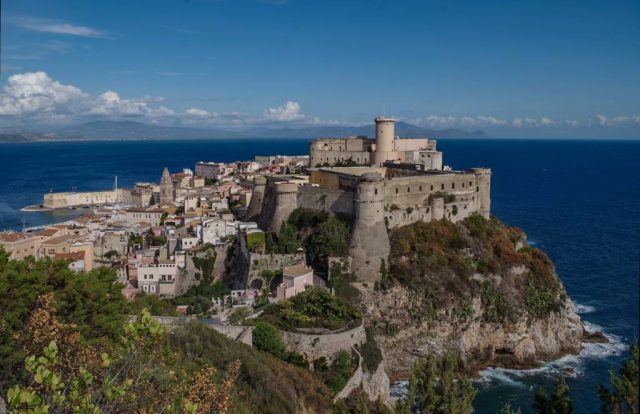
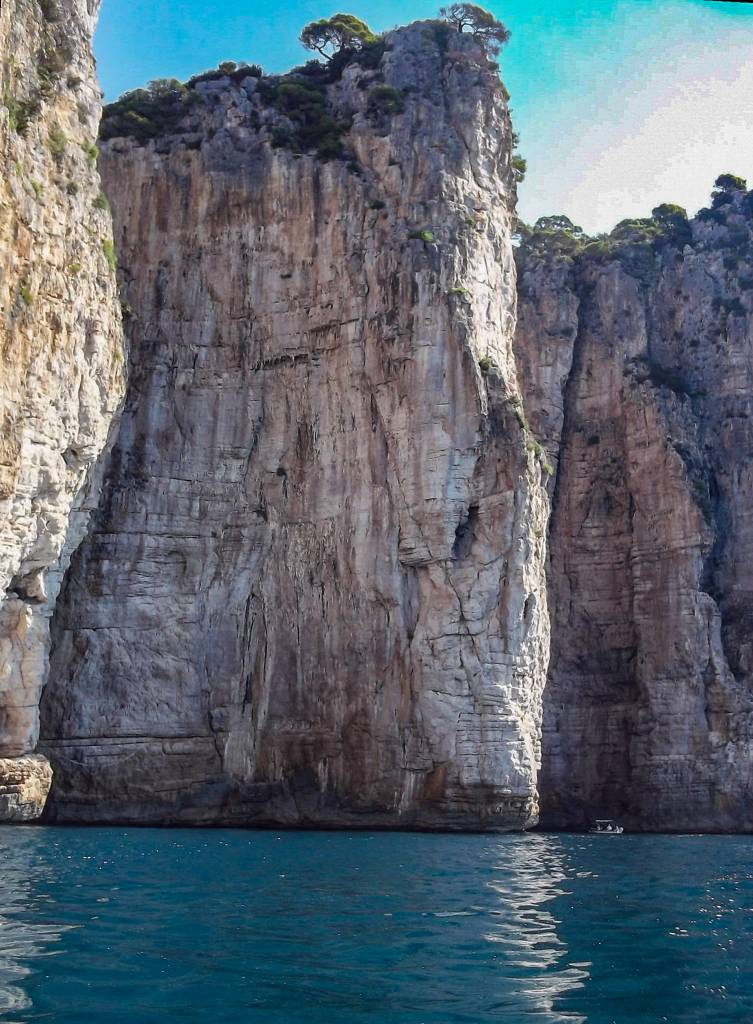
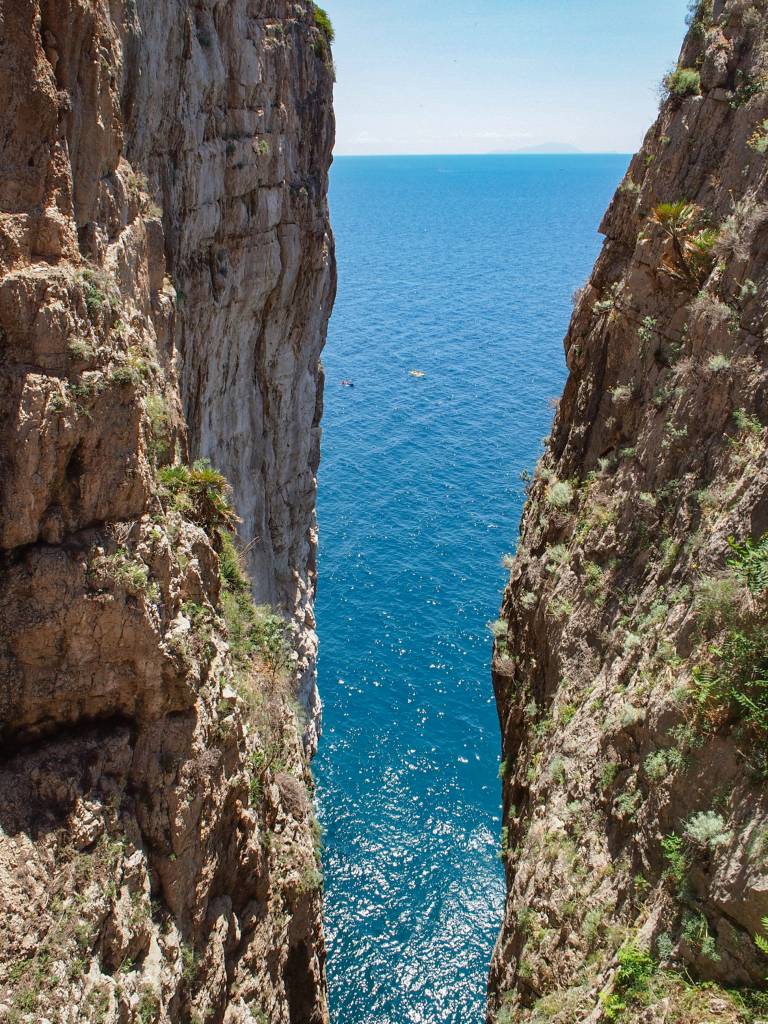
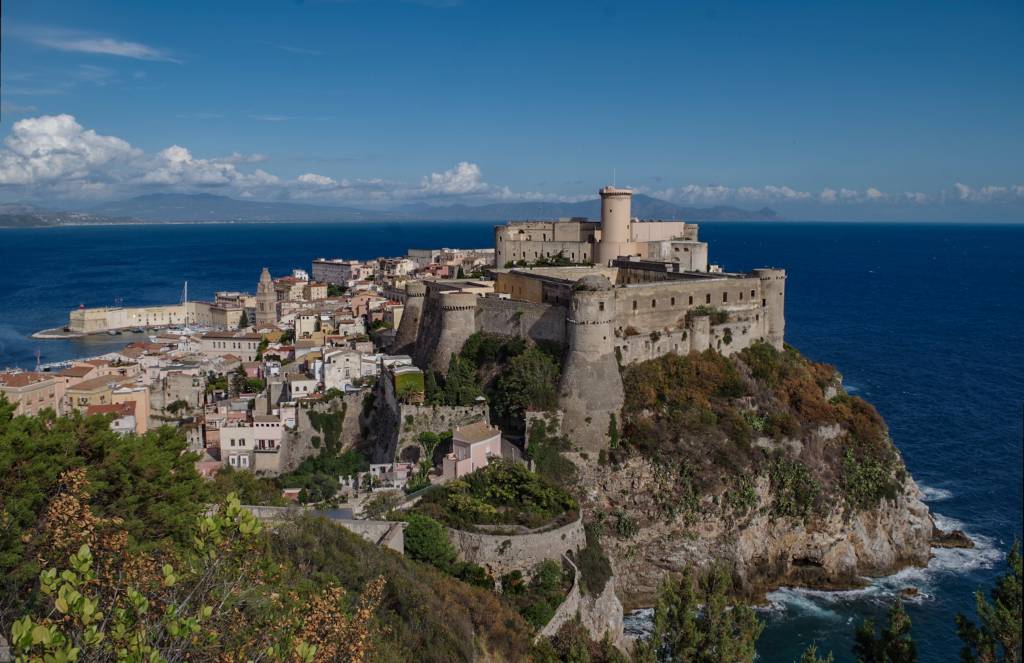
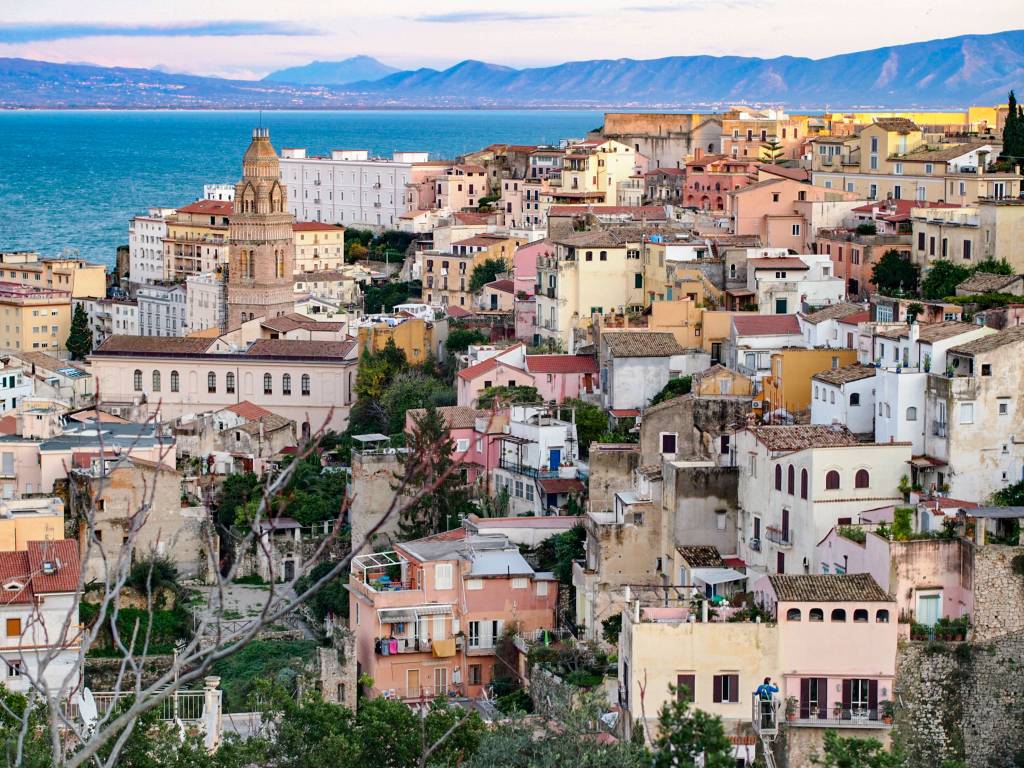
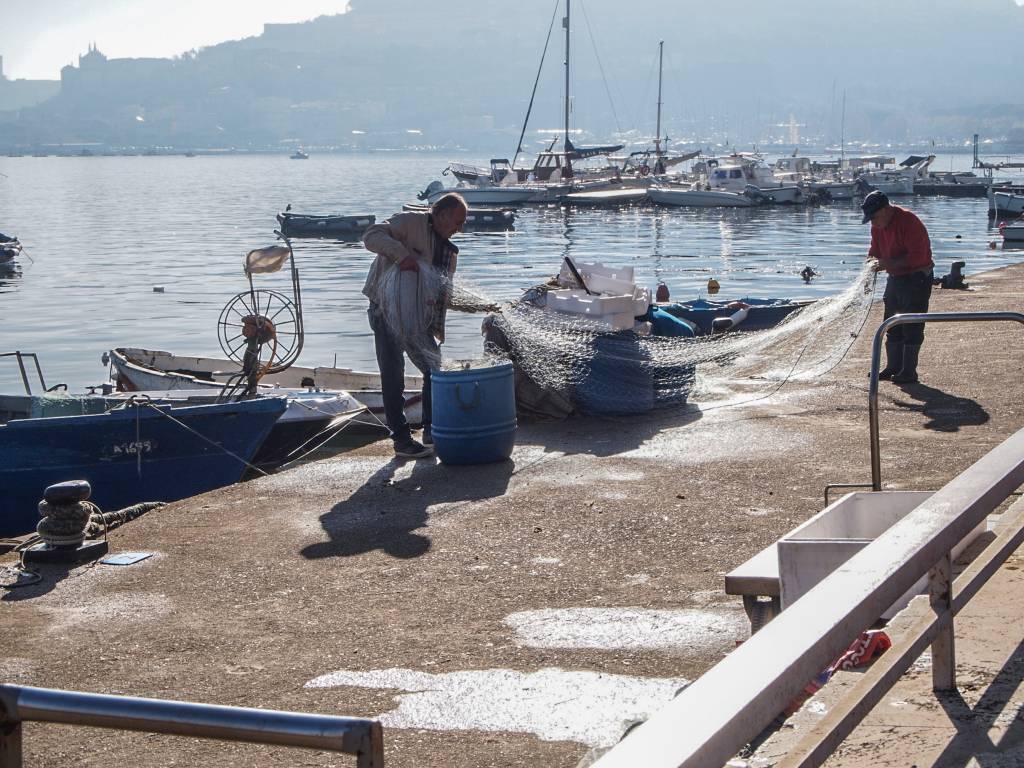
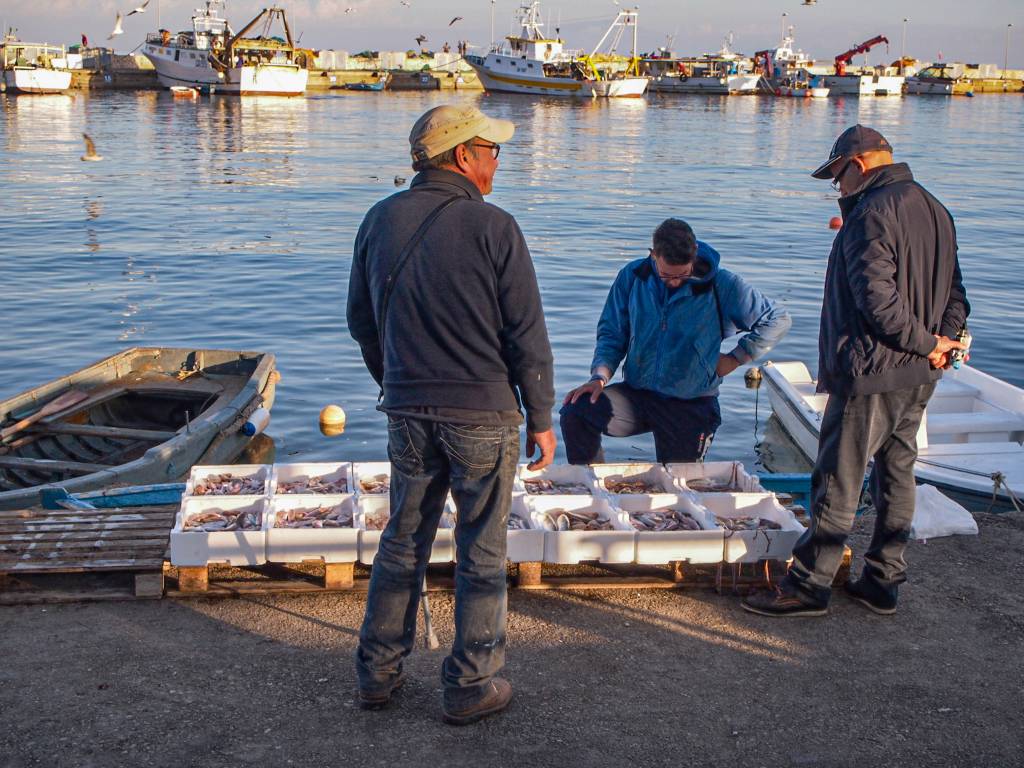
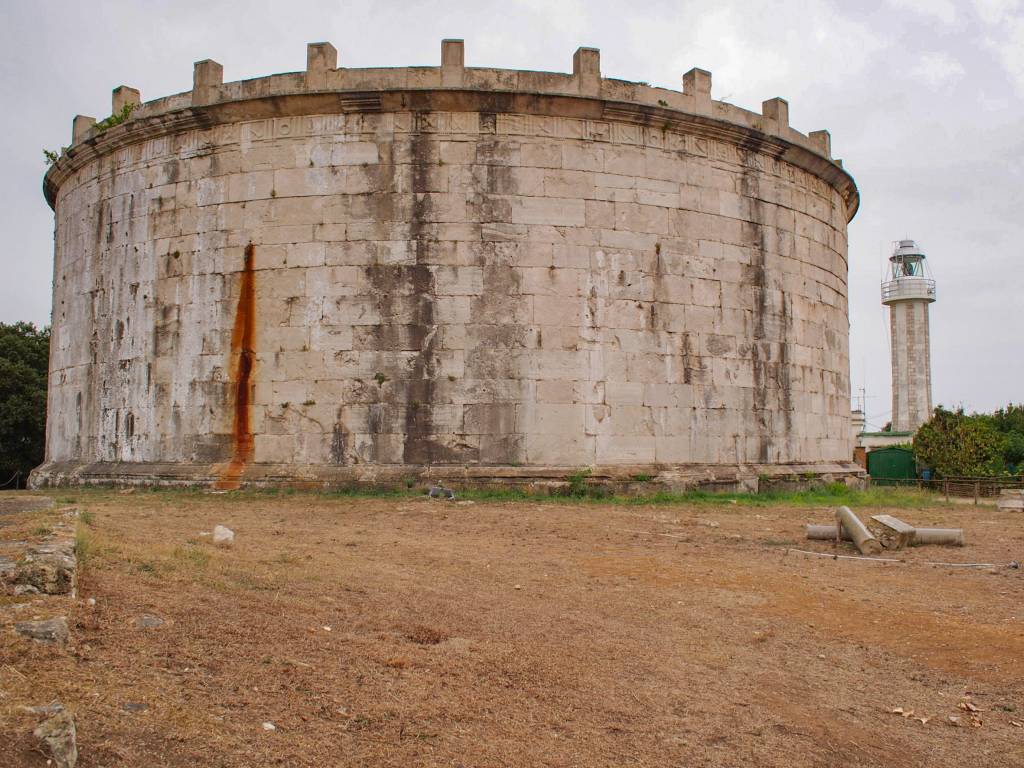
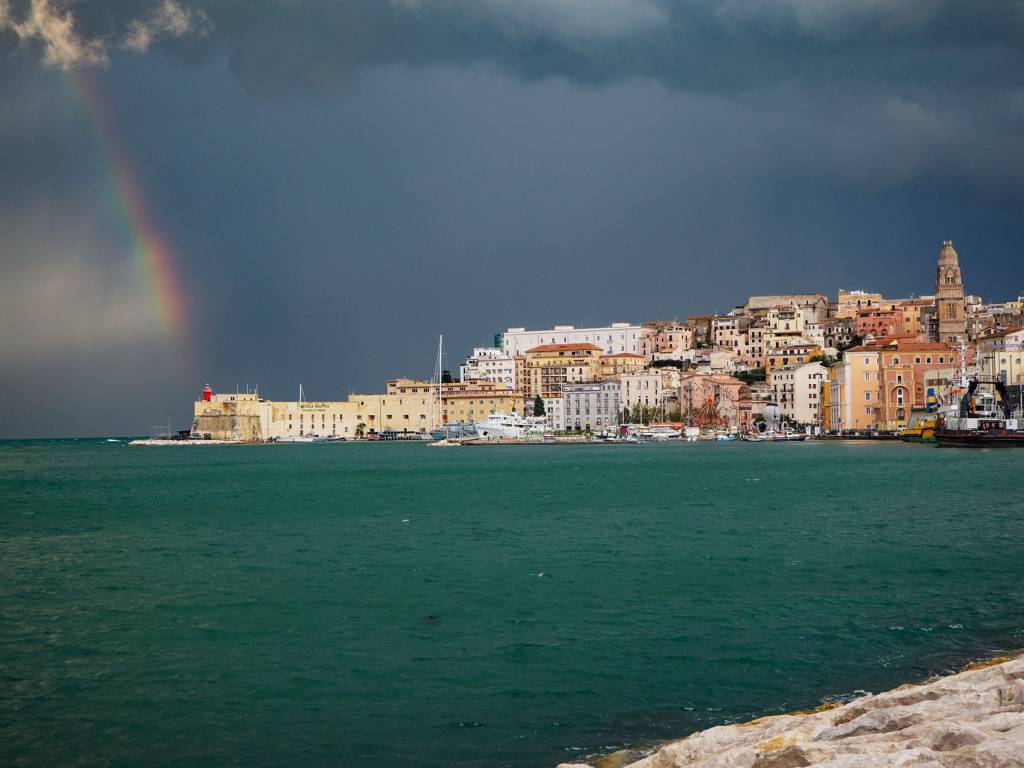
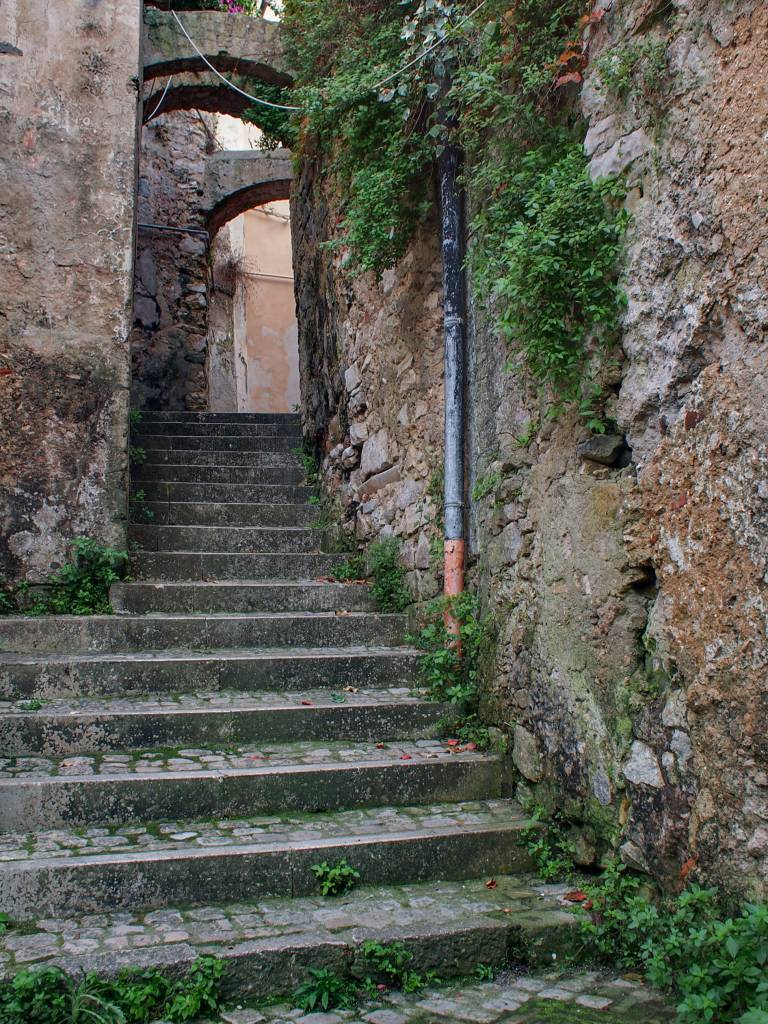
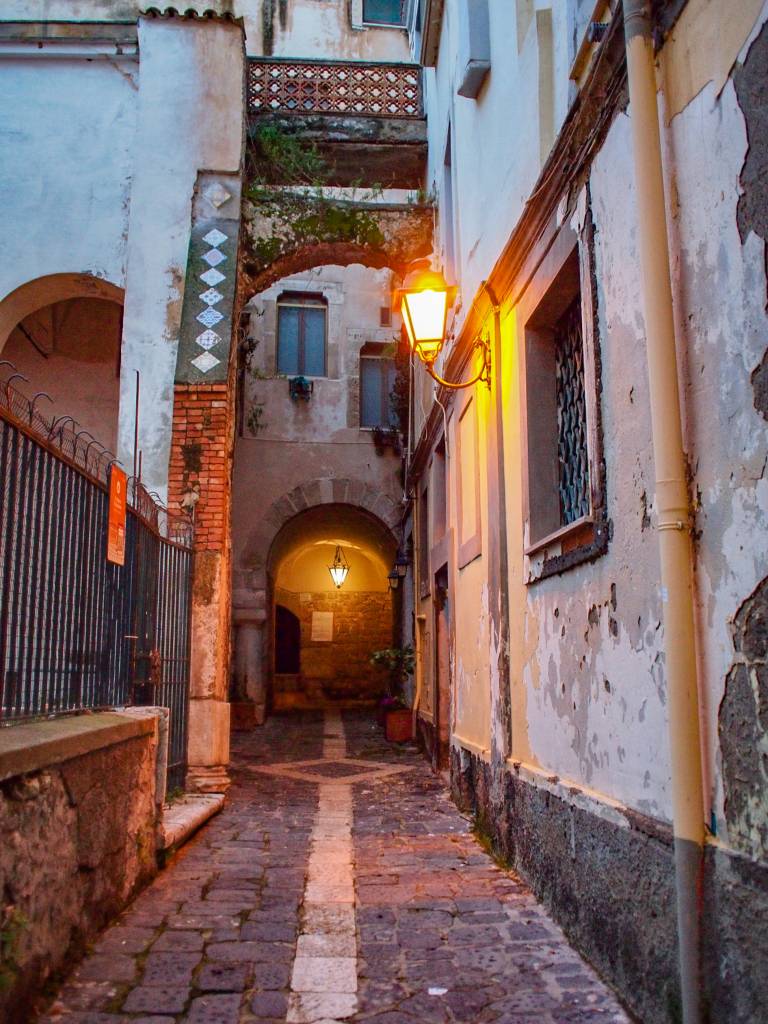



Lovely article and fabulous pictures, Andrea. This is now on my ‘must visit’ list when the Covid pandemic has passed. I was in Naples with my wife last year, but all the trips we took were in the other direction from Gaeta, towards Pompeii and Ercolano and to the top of Vesuvius. It is a lovely part of the world with great sunshine, people and food, of course.
You can keep adding to my list of wonderful places to visit in Italy.
William
Thank you, William, and happy that this article encouraged you to come and visit. Not only the place is nice, the seafood is excellent!
Thank you Andrea for presenting these images and travel.
I do like the light in the fish market shot. And the Houses on Punta Stendardo would make a great 1,000 piece jigsaw puzzle!
Thank you Wayne! I fear that it would be a difficult jigsaw puzzle: too much green and gray areas!
I get lost in the last two pics, I enter the gate on my way to pay homage to the royals, in their residence ! Photo from your kayak, maybe Mike would know, is it a first for Macfilos.thank you for a nice escape.
Thank you John! I have plentiful of pictures taken from my kayak, this one may be a first on Macfilos, but possibly not the last one!
A very interesting article Andrea and a good introduction to an area I have known nothing about. Thanks! Lovely photos, particularly those of the narrow streets.
Thank you Kevin!
What a brilliant article and great images. Since you started posting articles on the blog, I’ve been amazed by the historical backgrounds linked to the images of places you’ve been capturing. The rainbow shot and the two shots of the fishermen are my favourites. In the rainbow shot, like Dave, I would have cut off some part of the sea in the foreground as it looks empty and nothing is there to catch the eyes. Looking forward to your next article.
Thank you Jean, I greatly appreciate your suggestions!
Thank you Farhiz!
Very enjoyable account Andrea. The photo with the houses on Punta Stendardo is wonderful for the detail. And I love the last two as well.
Thank you Farhiz!
This is a wonderful article and story, and what a stunning rainbow shot. (This is probably a poor explanation of what I can see in that image) The only minor adjustment I would have made is to cut off a portion of the lower part of the image – placing the city along the lower third line – or thereabouts. This would have given the sky greater dominance, with a lush bright green band at the bottom – with the wonderful rainbow down the left hand side.
I will look forward to your next article,
Best wishes
Dave
Thank you Dave! Yours is surely a good suggestion, and I actually shot a few compositions that day. However you would not believe how short lived that rainbow was: I have it appearing and vanishing in a series of less than ten shots!